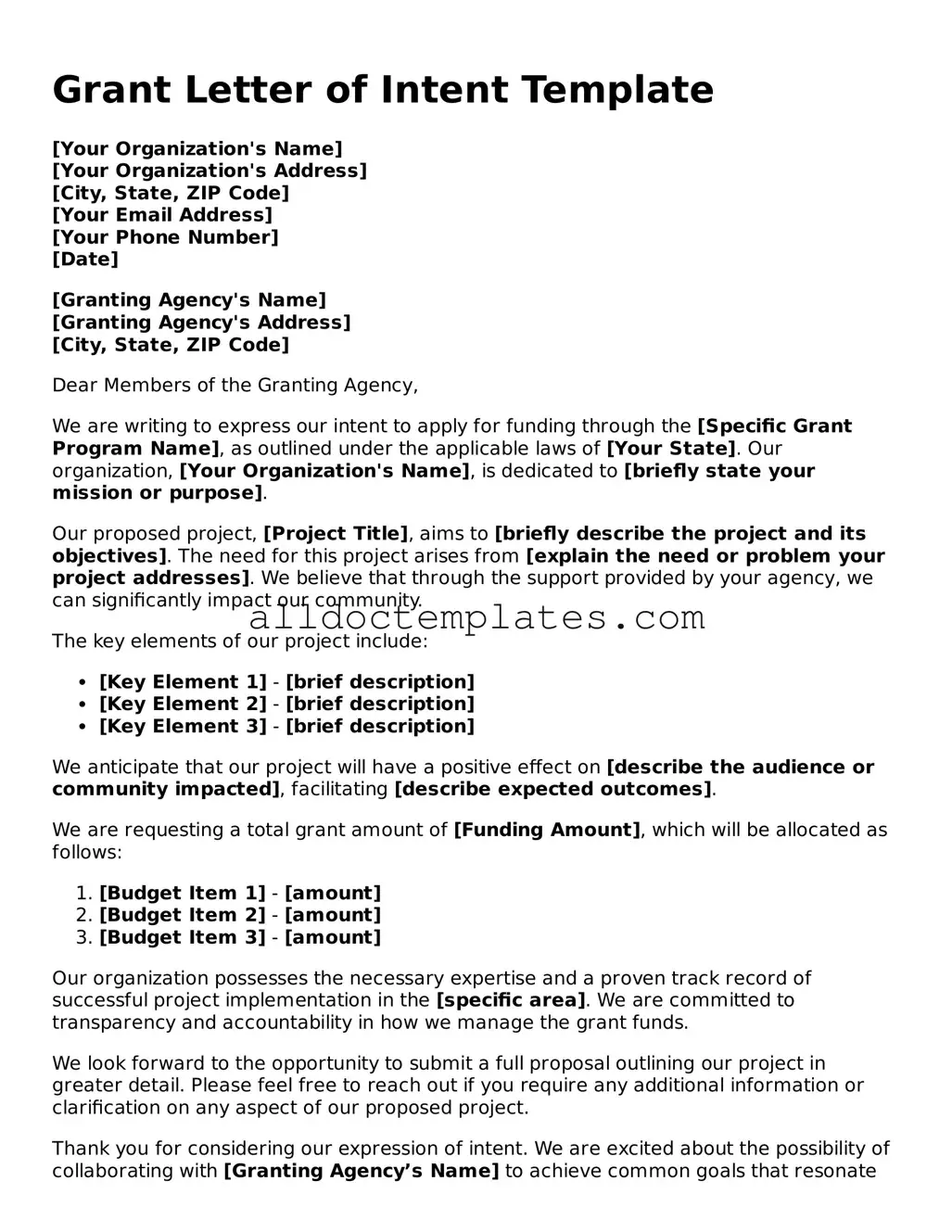Grant Letter of Intent Template
[Your Organization's Name]
[Your Organization's Address]
[City, State, ZIP Code]
[Your Email Address]
[Your Phone Number]
[Date]
[Granting Agency's Name]
[Granting Agency's Address]
[City, State, ZIP Code]
Dear Members of the Granting Agency,
We are writing to express our intent to apply for funding through the [Specific Grant Program Name], as outlined under the applicable laws of [Your State]. Our organization, [Your Organization's Name], is dedicated to [briefly state your mission or purpose].
Our proposed project, [Project Title], aims to [briefly describe the project and its objectives]. The need for this project arises from [explain the need or problem your project addresses]. We believe that through the support provided by your agency, we can significantly impact our community.
The key elements of our project include:
- [Key Element 1] - [brief description]
- [Key Element 2] - [brief description]
- [Key Element 3] - [brief description]
We anticipate that our project will have a positive effect on [describe the audience or community impacted], facilitating [describe expected outcomes].
We are requesting a total grant amount of [Funding Amount], which will be allocated as follows:
- [Budget Item 1] - [amount]
- [Budget Item 2] - [amount]
- [Budget Item 3] - [amount]
Our organization possesses the necessary expertise and a proven track record of successful project implementation in the [specific area]. We are committed to transparency and accountability in how we manage the grant funds.
We look forward to the opportunity to submit a full proposal outlining our project in greater detail. Please feel free to reach out if you require any additional information or clarification on any aspect of our proposed project.
Thank you for considering our expression of intent. We are excited about the possibility of collaborating with [Granting Agency’s Name] to achieve common goals that resonate with [community or target audience].
Sincerely,
[Your Name]
[Your Title]
[Your Organization's Name]
